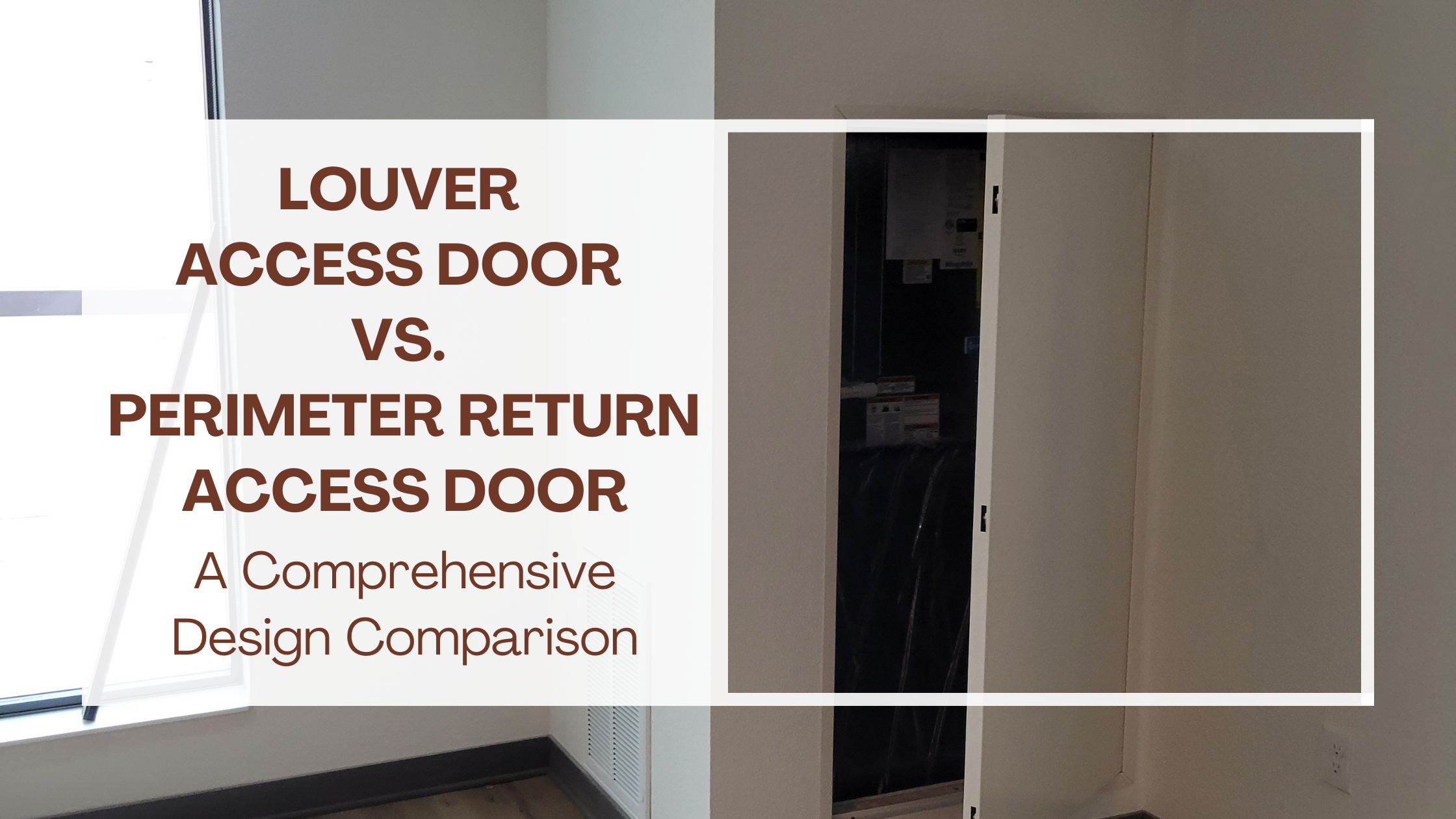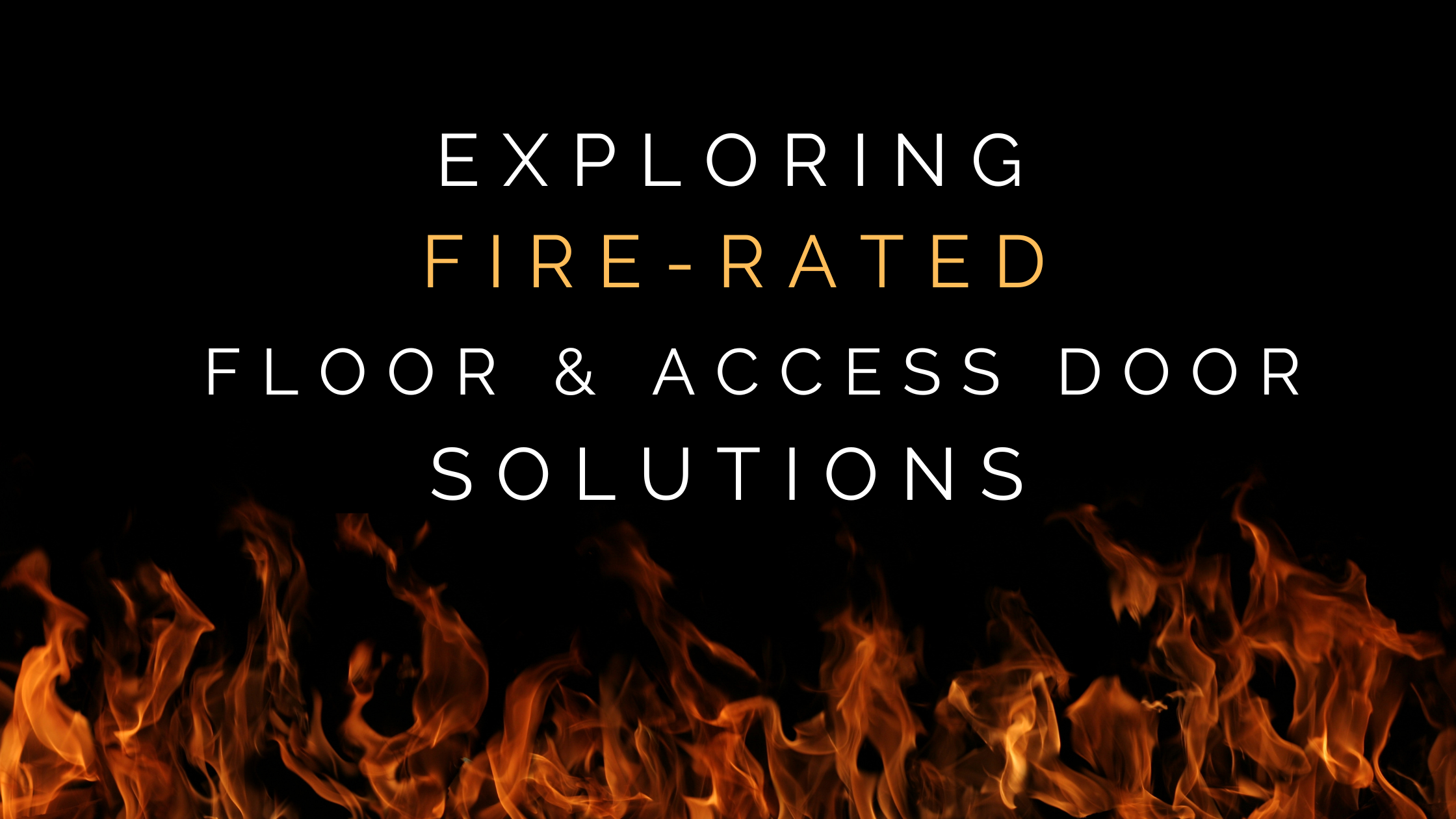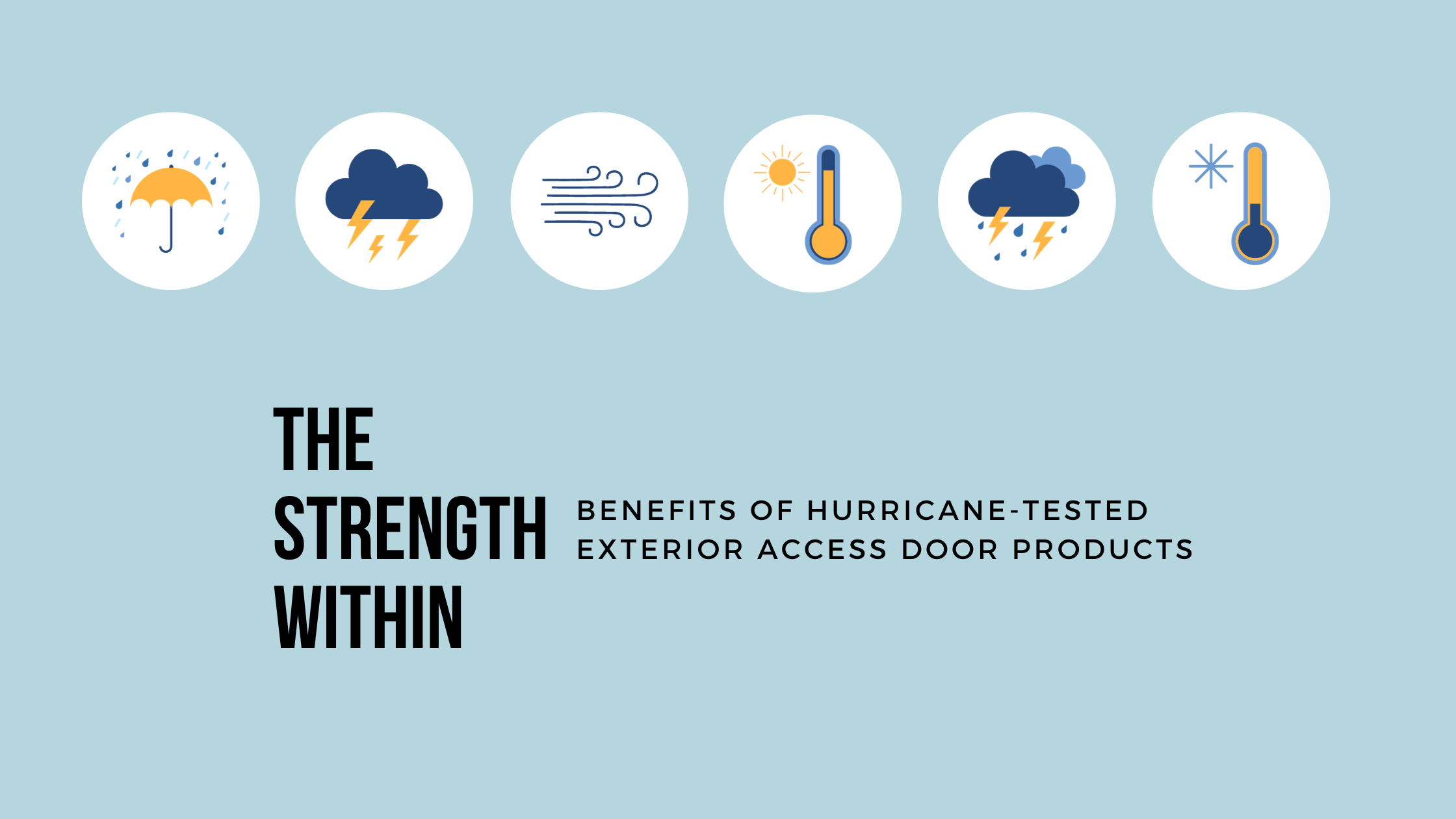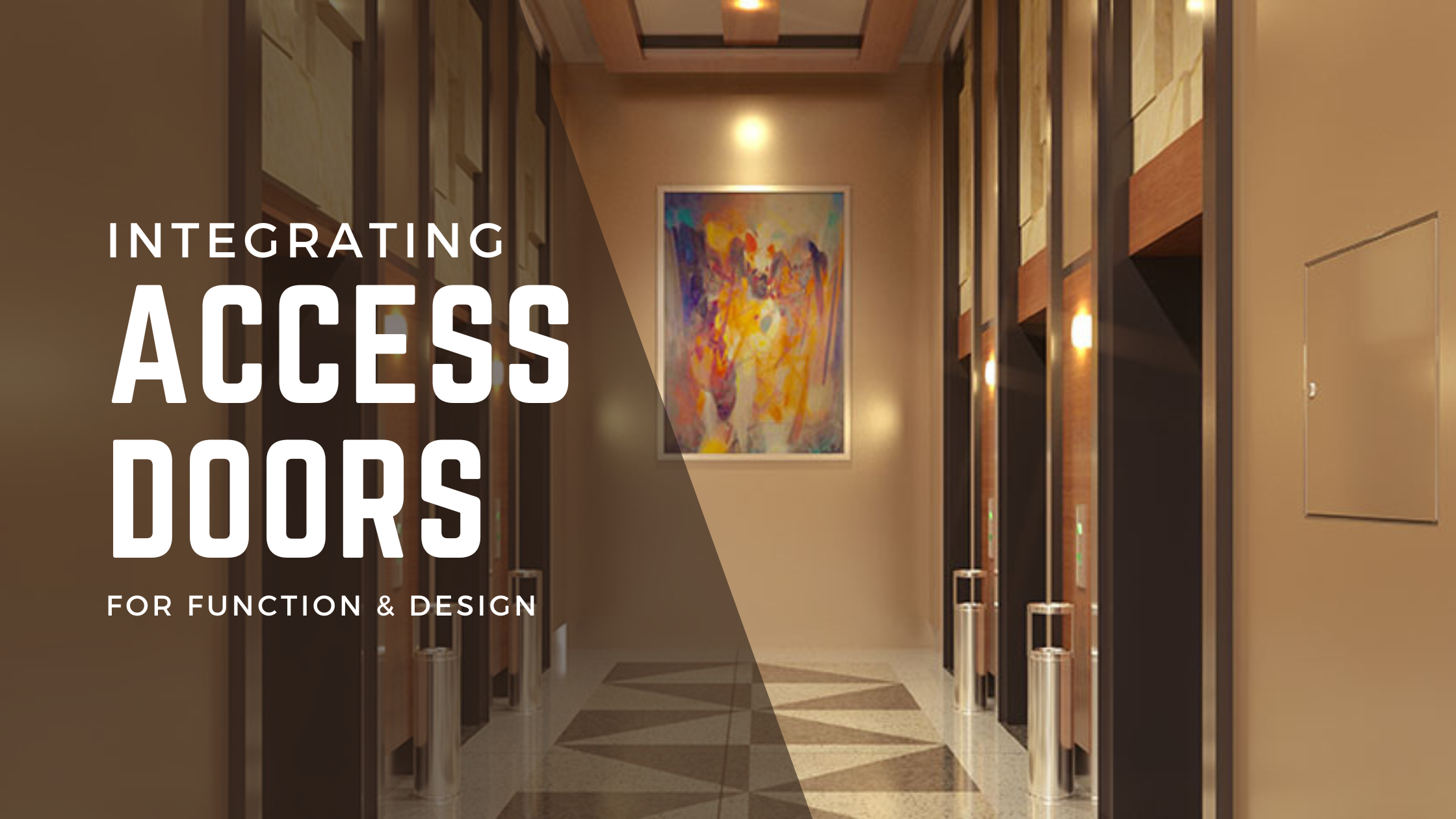5 Access Doors for Plumbers
Posts about:
-1.png)

The building products industry is on the cusp of significant transformation, driven by technological advancements, sustainability demands, and evolving construction practices. As we look to the future, it’s clear that innovation will be the key to staying competitive. Nystrom is poised to lead the way with forward-thinking strategies and cutting-edge developments. Here’s a glimpse into the future of building products and how Nystrom plans to stay ahead of the curve.

In the realm of HVAC systems, ensuring proper airflow and maintaining optimal indoor air quality are paramount. Two key components that facilitate these functions are Louver Access Doors and Perimeter Return Doors. Both serve crucial roles in different aspects of HVAC operations, but they come with distinct features, applications, and advantages. Understanding these differences is essential for selecting the right solution for your specific needs.
Design:
Louver access doors are designed with angled slats or fins, strategically positioned to allow air to flow through while blocking unwanted elements. These louvers are typically crafted from materials like aluminum or galvanized steel, which are durable and resistant to corrosion. The angled design ensures that debris and direct sunlight do not penetrate the interior spaces, thus protecting the HVAC system.
Function:
The primary function of louver access doors is to provide ventilation while also offering protection from environmental factors. They serve as a controlled gateway for air, ensuring that the HVAC system can operate efficiently by maintaining a consistent flow of fresh air. The design of the louvers allows for a balance between airflow and protection, making them ideal for use in environments where both are critical.
Advantages:
One of the significant advantages of louver access doors is their effectiveness in managing airflow while providing protection from external elements. The design prevents the ingress of debris and direct sunlight, which can be damaging to HVAC components. Additionally, louver access doors can be customized in terms of size, material, and finish, allowing them to blend seamlessly with the building's architecture.
Design:
Perimeter return doors feature a design that includes a gap or opening around the perimeter of the door. This gap allows air to return to the HVAC system, creating a pathway for make-up air or exhaust air. Unlike louvered doors, perimeter return doors do not have visible slats or fins, resulting in a smooth, clean appearance. The design often incorporates insulating materials to enhance thermal and acoustical performance.
Function:
The primary function of perimeter return doors is to provide a clean, louver-free solution for air return within an HVAC system. These doors are often used in spaces where make-up air needs to be directed to appliances or other specific areas. The design allows for efficient air movement while maintaining the aesthetic integrity of the space.
Applications:
Perimeter return doors are ideal for high-end residential or commercial buildings where a seamless and elegant appearance is desired. They are commonly used in upscale office buildings, hotels, and luxury residences, where the visual impact of the design is as important as the functionality. These doors are also well-suited for environments where noise reduction and thermal insulation are critical, such as in conference rooms, theaters, and other sensitive areas.
Advantages:
Perimeter return doors offer several advantages, including superior acoustical and thermal performance due to the incorporation of insulation within the door structure. This insulation helps reduce noise transmission and minimizes heat loss or gain, contributing to energy efficiency. Additionally, perimeter return doors provide easy access for service and repair, making them a practical choice for settings where maintenance is a consideration. The absence of visible louvers also ensures a clean, modern appearance, which is often preferred in high-end architectural designs.

Appearance:
One of the most noticeable differences between louver access doors and perimeter return doors is their appearance. Louver access doors feature visible slats or fins, which are functional but may not always align with the aesthetic preferences of certain architectural designs. In contrast, perimeter return doors offer a more discreet, seamless look, making them ideal for spaces where maintaining a clean and unobtrusive appearance is important.
Performance:
In terms of performance, perimeter return doors often provide better acoustical and thermal insulation compared to louver access doors. This is due to the inclusion of insulating materials within the door structure, which helps to dampen sound and improve energy efficiency. Louver access doors, on the other hand, excel in environments where protection from external elements is a priority, as their design is specifically intended to block debris, and sunlight while allowing for adequate ventilation.
Maintenance:
Both louver access doors and perimeter return doors are designed for easy access, which is essential for regular maintenance and servicing of HVAC systems. However, perimeter return doors may be preferred in settings where aesthetics is crucial, as they can be opened and serviced without disrupting the overall look of the space. Louver access doors, while functional and easy to maintain, may require more attention to ensure that the louvers remain free from obstructions and continue to operate effectively.
When choosing between louver access doors and perimeter return doors, it is essential to consider the specific requirements of your HVAC system and the overall design goals of the space. Louver access doors are an excellent choice for environments where ventilation and protection from external elements are critical, offering a practical and cost-effective solution. Perimeter return doors, on the other hand, provide a sophisticated, aesthetically pleasing option with enhanced acoustical and thermal performance, making them ideal for high-end applications.
By understanding the unique features and benefits of each option, you can make an informed decision that enhances both the functionality and appearance of your HVAC system. Whether you prioritize airflow management, protection from environmental factors, or a seamless design, selecting the right door design is crucial for achieving optimal performance and maintaining the integrity of your building's HVAC system.
Nystrom Access Doors give easy access to mechanical, electrical and plumbing fixtures behind a wall. Our flexible manufacturing takes the hassle out of custom sizing, materials, and colors. Combine that with strategically located stocking facilities around the country, and you get exactly the door you need. For more information on louver, perimeter access doors or other access door product options, specifications, documentation or more, please reach out to our Customer Sales & Support team or visit the website.


Access doors are crucial components in various architectural and construction projects, providing convenient and secure entry points to enclosed spaces such as utility closets, crawl spaces, attics, and mechanical rooms. Their role extends beyond mere functionality, often contributing to the overall safety, security, and efficiency of a building or structure.

As early as 1897, the National Fire Protection Agency (NFPA) has been addressing fire life and safety concerns. Currently, NFPA 80 is the standard for fire doors and other opening protectives. Chapter 16 of NFPA 80 is designated for access doors in both horizontal and vertical applications in fire-rated walls, floors, and floor-ceiling or roof-ceiling assemblies (NFPA 2022). This article addresses common uses, styles and specification tips for fire-rated floor doors and access doors.

When it comes to commercial buildings, safety and resilience are paramount. The impact of hurricanes and severe weather events can be devastating, making it essential to fortify every aspect of the structure. One often overlooked component is the exterior access door. As the 2023 hurricane season is already active with the US experiencing three tropical storms and one hurricane since January, we'll explore the numerous benefits of Florida-Approved hurricane-tested commercial building exterior Access Doors products, highlighting why they're a game-changer for modern construction.
.png)
In today's fast-paced world, safety is a paramount concern for businesses, organizations, and individuals alike. Ensuring the well-being of everyone within a building, whether it's a workplace, commercial space, or public facility, is of utmost importance. That's where Nystrom steps in to lend a helping hand with a wide range of safety solutions designed to protect, guide, and enhance the overall safety experience.
.png)
In an era of globalization, it is essential to support local economies. When it comes to commercial building projects, the decision to choose "Made in the USA" products can have a profound impact on various aspects, including quality and the overall well-being of our communities. In this blog post, we will explore the numerous advantages of selecting American-made commercial building products.

Have you ever had the sensation of seeing a particular thing everywhere after noticing it for the first time? It often happens after you purchase a new car. You never noticed before, but now you see your car model everywhere. Much the same could be said for access doors and panels. Many of our team members, prior to working in the commercial building industry, took access doors for granted. Now, as industry professionals, they notice them in hotels, businesses, hospitals, universities, malls, and more—they’re everywhere! Even though they aren’t sexy like Renaissance architecture or beautiful like marble flooring, they are necessary components of buildings and in many cases, purposely intended to be part of a hidden design that blends seamlessly with the architecture.